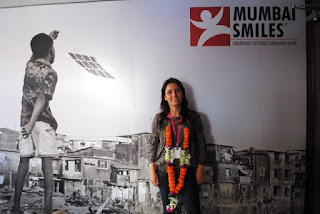Today, Mumbai's popular Ganesh Chaturthi festival comes to an end.
The festival is a celebration of the birthday of Ganesh, the elephant-headed son of Shiva and Parvati. The Hindu god is widely worshipped as the god of wisdom, prosperity and good fortune.
While celebrated all over India, it is most elaborate in western India, especially Mumbai, where specially built Ganesh statues are installed in colorfully decorated homes and specially erected temporary structures (pandals) in every locality. The pandals are erected by the people or a specific society or locality or group by collecting monetary contributions.
The main sweet dish during the festival is the modak, a dumpling made from rice flour/wheat flour with a stuffing of fresh or dry-grated coconut, jaggery, dry fruits and some other condiments. It is either steam-cooked or fried.
Public celebrations of the festival are hugely popular, with local communities (mandalas) vying with each other to put up the biggest statue and the best pandal. The festival is also the time for cultural activities like singing and theater performances, orchestra and community activities like free medical checkup, blood donation camps, charity for the poor, etc.
Today, Ganesh Chaturthi is not only a popular festival, it has become a very critical and important economic activity for Maharashtra. Many artists, industries, and businesses survive on this mega-event. The festival also provides a stage for budding artists to present their art to the public.
After 10 days of worship, on the 11th day, the Ganesh statues are taken through the streets of Mumbai in a procession accompanied with dancing, singing, and fanfare to be immersed the sea symbolizing a ritual see-off of the Lord in his journey towards his abode in Kailash while taking away with him the misfortunes of his devotees. This is the ritual known as Ganesh Visarjan.
As they say, Ganpati bappa moray, pudchya varshi lavkarya. Beloved Lord Ganpati, come back soon next year.



















































